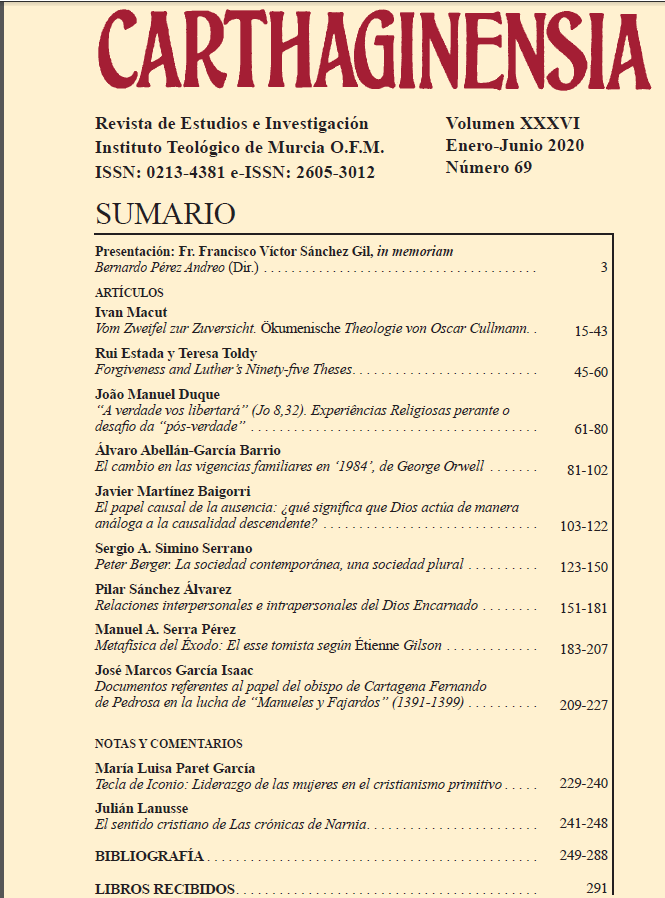Relaciones intrapersonales e interpersonales del Dios Encarnado Intrapersonal and interpersonal relationships of the Incarnate God
Main Article Content
Abstract
Una vez introducido a Jesucristo como hombre, acudiendo a las fuentes históricas y las distintas emociones de Jesús de Nazaret reflejadas en el evangelio y como Dios, a través de los testimonios de los evangelistas y la tradición, se analiza el autoconcepto, la autoestima, la asertividad y la automotivación, capacidades necesarias para tener unas buenas relaciones consigo mismo; y también. la empatía en las relaciones interpersonales, es decir con Dios, con los otros, y con el mundo. Después de hacer este análisis se llega a la conclusión de que sabía quién era, que fue libre con confianza absoluta en el sentido de su vida, en la misión que debía llevar a cabo, que se relacionó con los demás mostrando una empatía extraordinaria con todos, optando por los más débiles, y que sus hechos y sus palabras muestran el amor de Dios por los hombres, criaturas salvadas.
Abstract: Once Jesus Christ has been introduced as Man going to historical sources and the different emotions of Jesus of Nazareth as reflected in the Gospel, and as God through the testimonies of the Evangelists as well as tradition, it is analysed the self-concept, self-esteem, assertiveness and self-motivation – necessary skills for a good relationship with oneself; and for empathy between interpersonal relations, that is, with God, others and the world. Upon completing this analysis, the article concludes that he knew who he was, that he was free and fully confident in the meaning of his life, in the mission he had to fulfil; that he relates to the others with extraordinary empathy, choosing the weakest and that his deeds and words show the love of God for men, those saved creatures.
Downloads
Publication Facts
Reviewer profiles N/A
Author statements
- Academic society
- Instituto Teológico de Murcia OFM
- Publisher
- Instituto Teológico de Murcia OFM
Global Statistics ℹ️
|
595
Views
|
251
Downloads
|
|
846
Total
|
|
Article Details

This work is licensed under a Creative Commons Attribution 3.0 Unported License.
The works published in this journal are subject to the following terms:
1. Carthaginensia retains the patrimonial rights (copyright) of the published works, and favors and allows the reuse of the same under the license of use indicated in the following point.
2. The works are published in the electronic edition of the journal under a Creative Commons By (CC By) License https://creativecommons.org/licenses/by/3.0/es/. They may be copied, used, disseminated, transmitted and publicly exhibited, provided that: i) the authorship and the original source of publication (journal, publisher and URL of the work) are cited; ii) they are not used for commercial purposes; iii) the existence and specifications of this license of use are mentioned.


